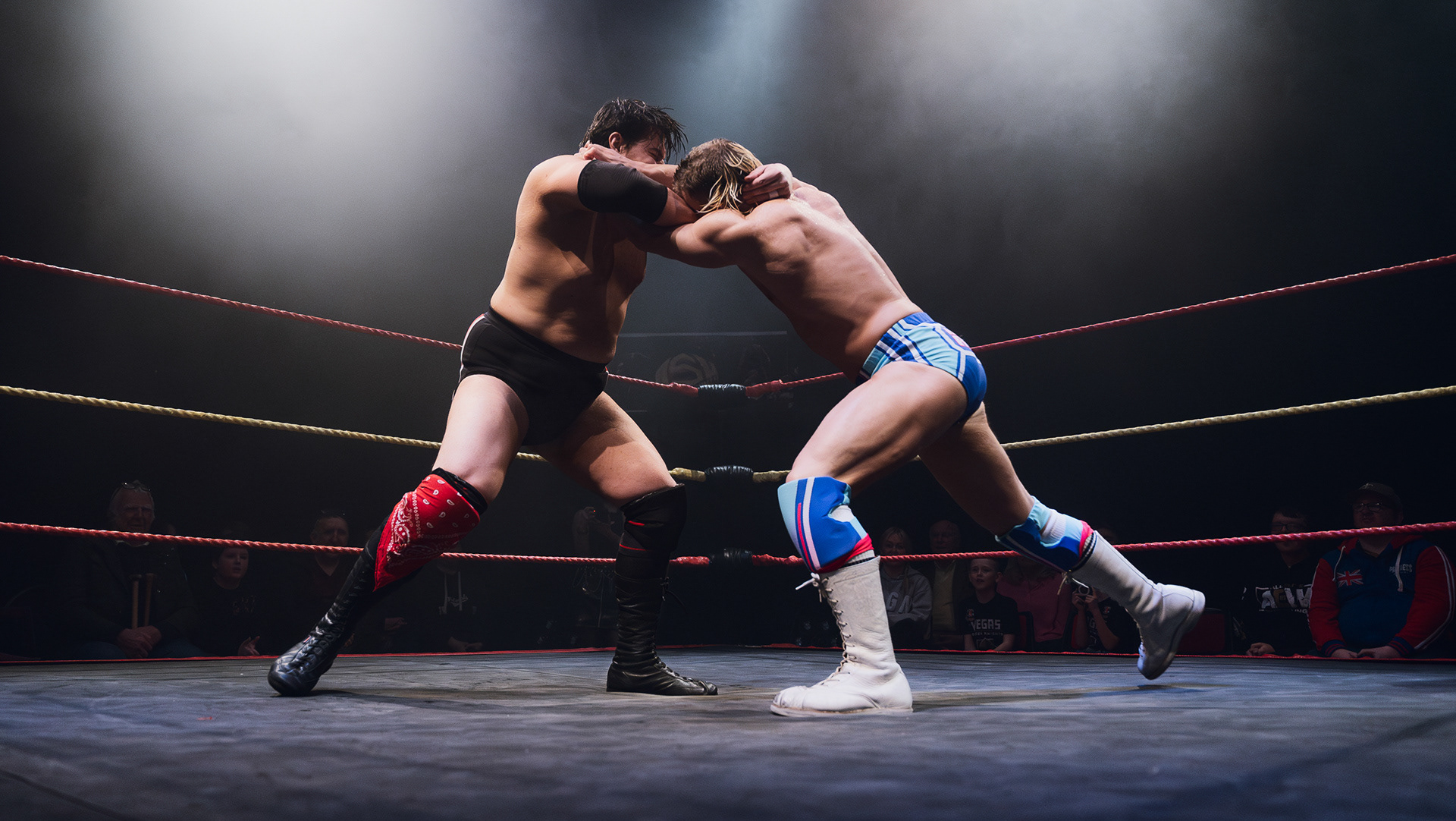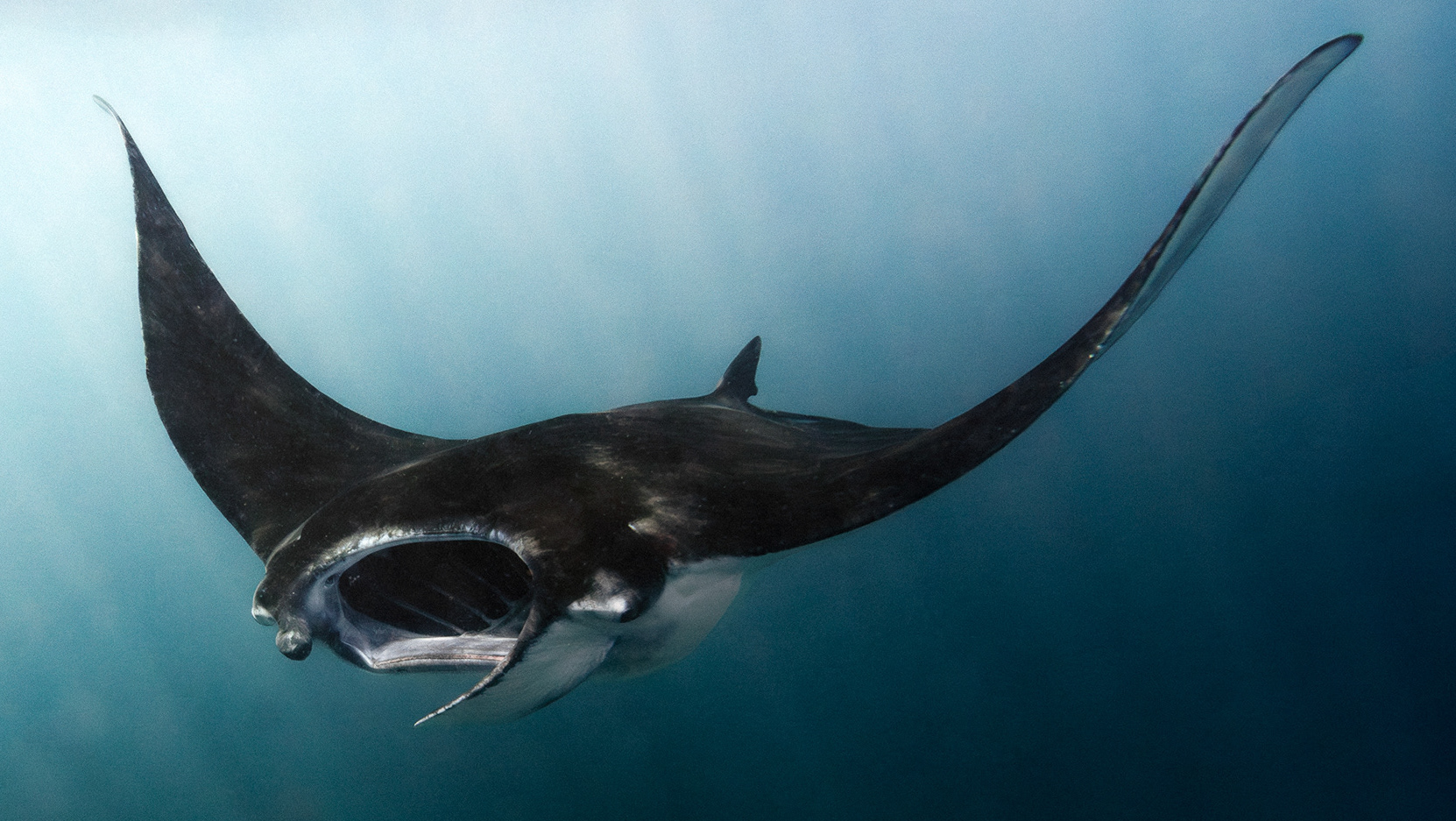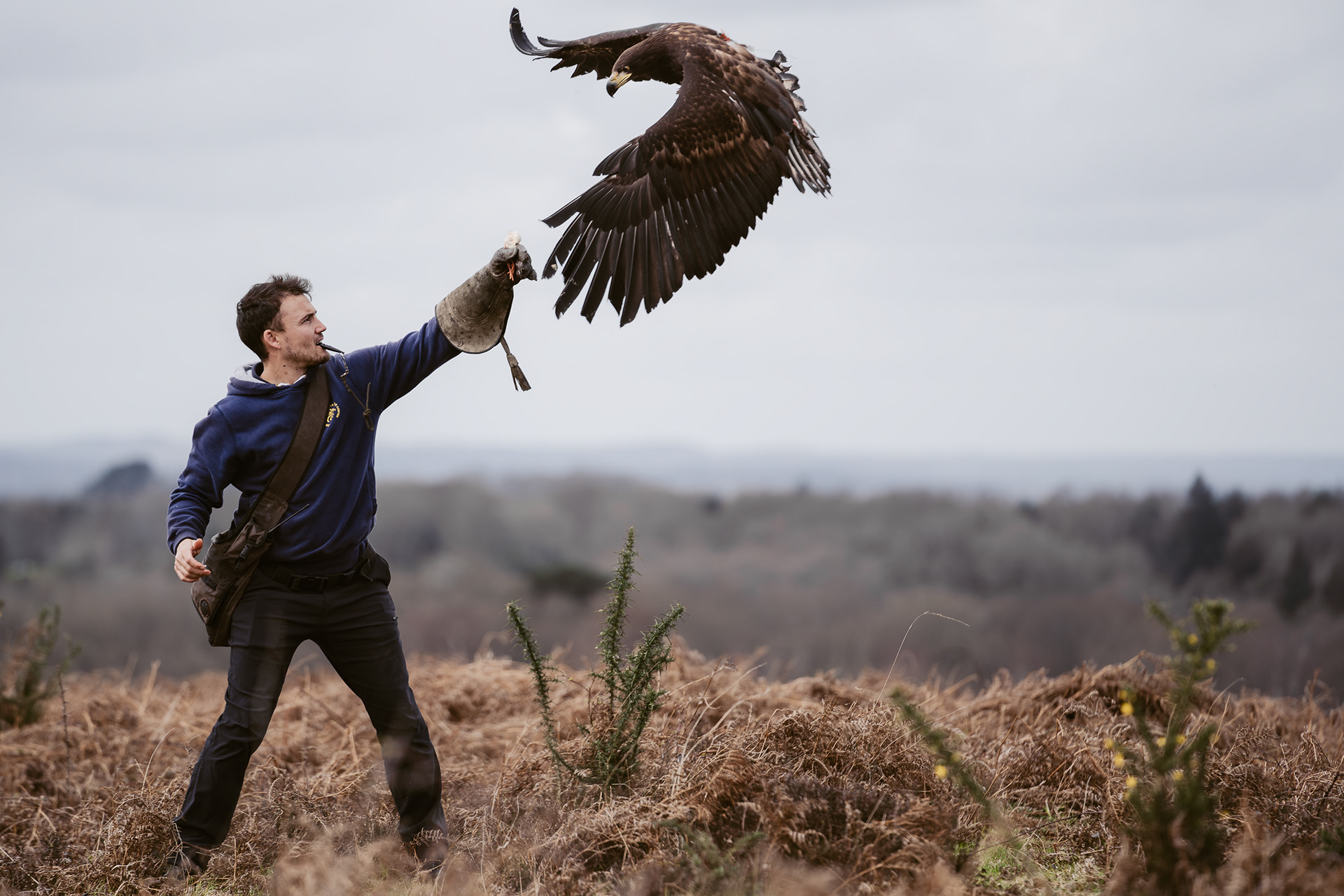
1.
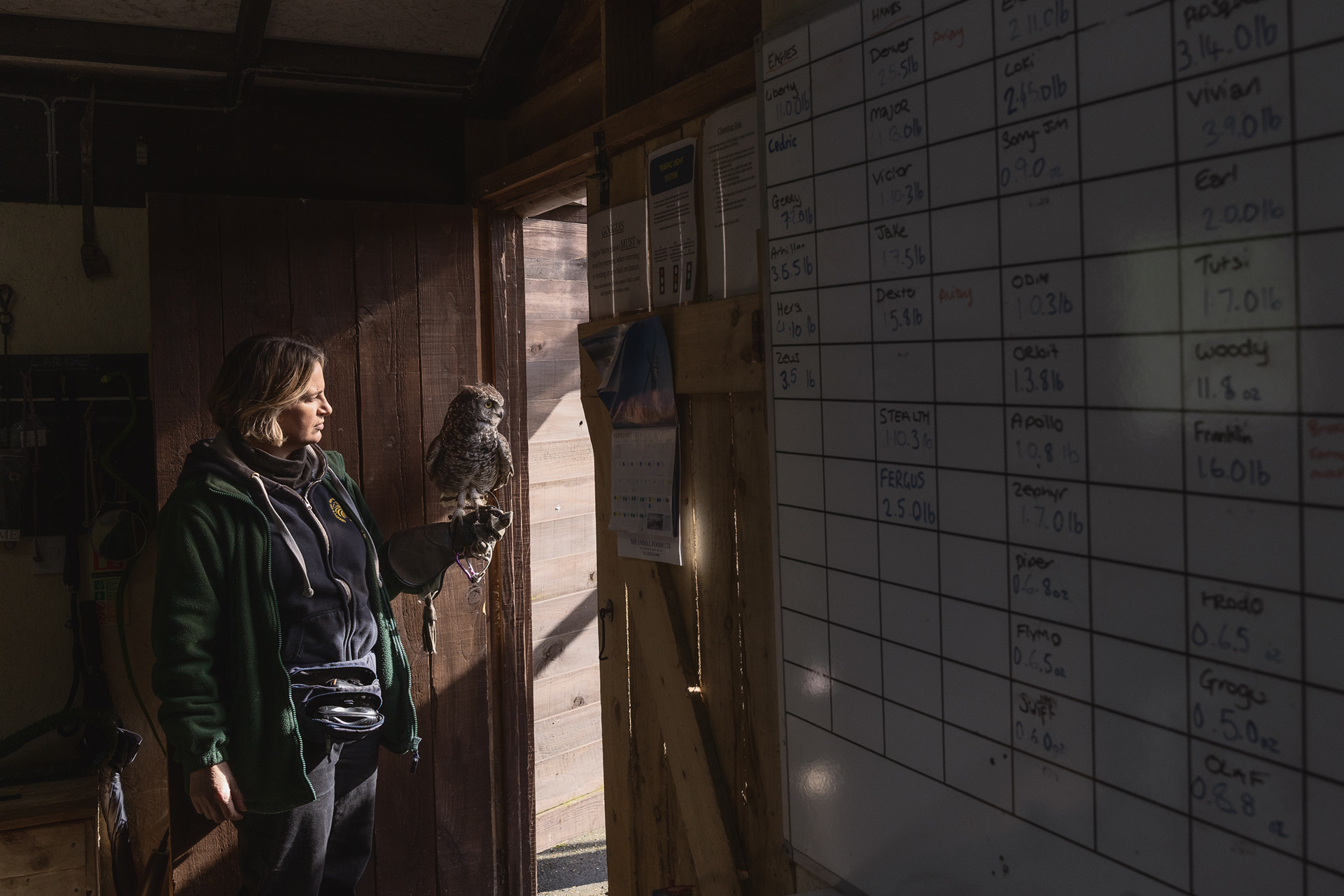
2.

3.
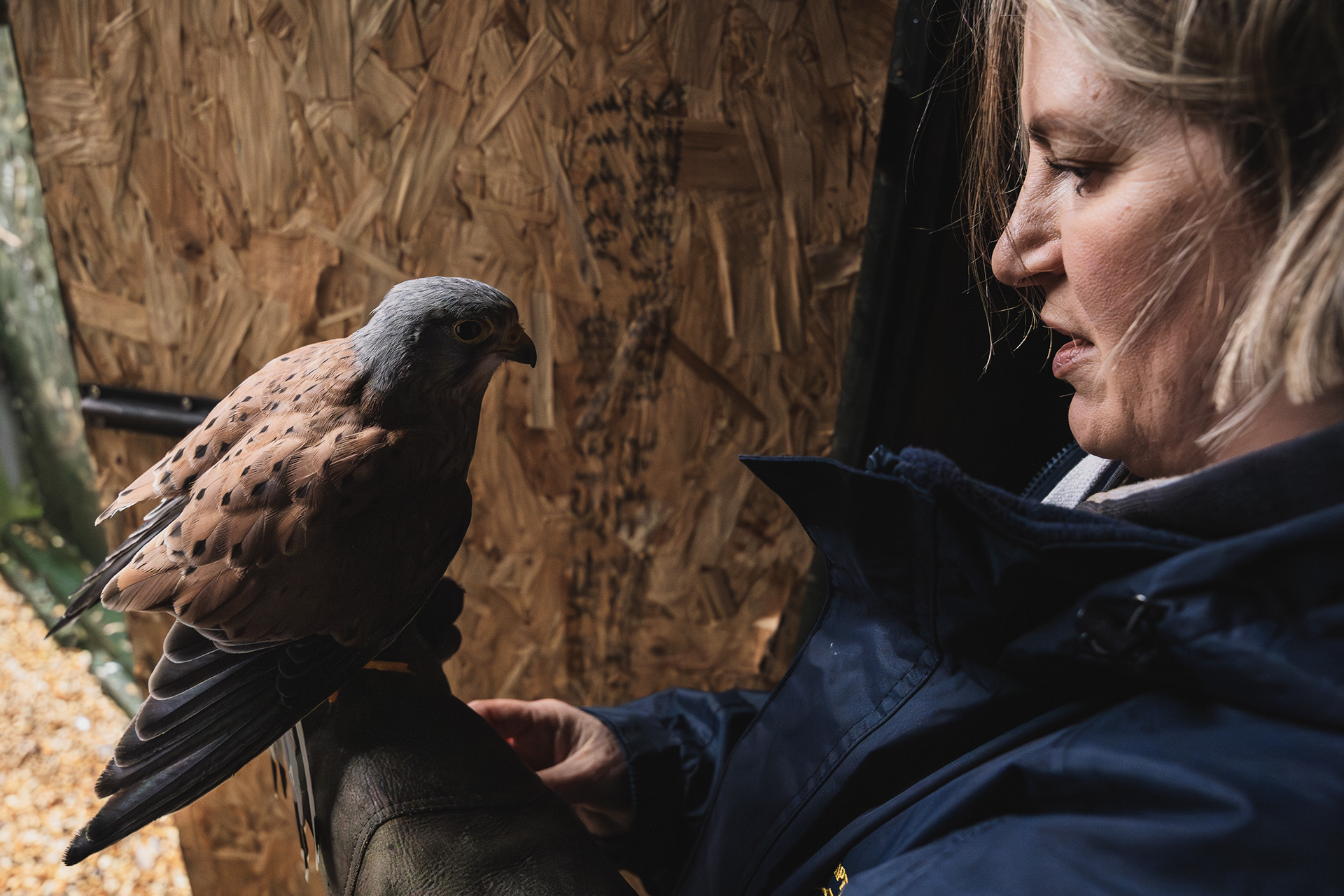
4.

5.

6.

7.
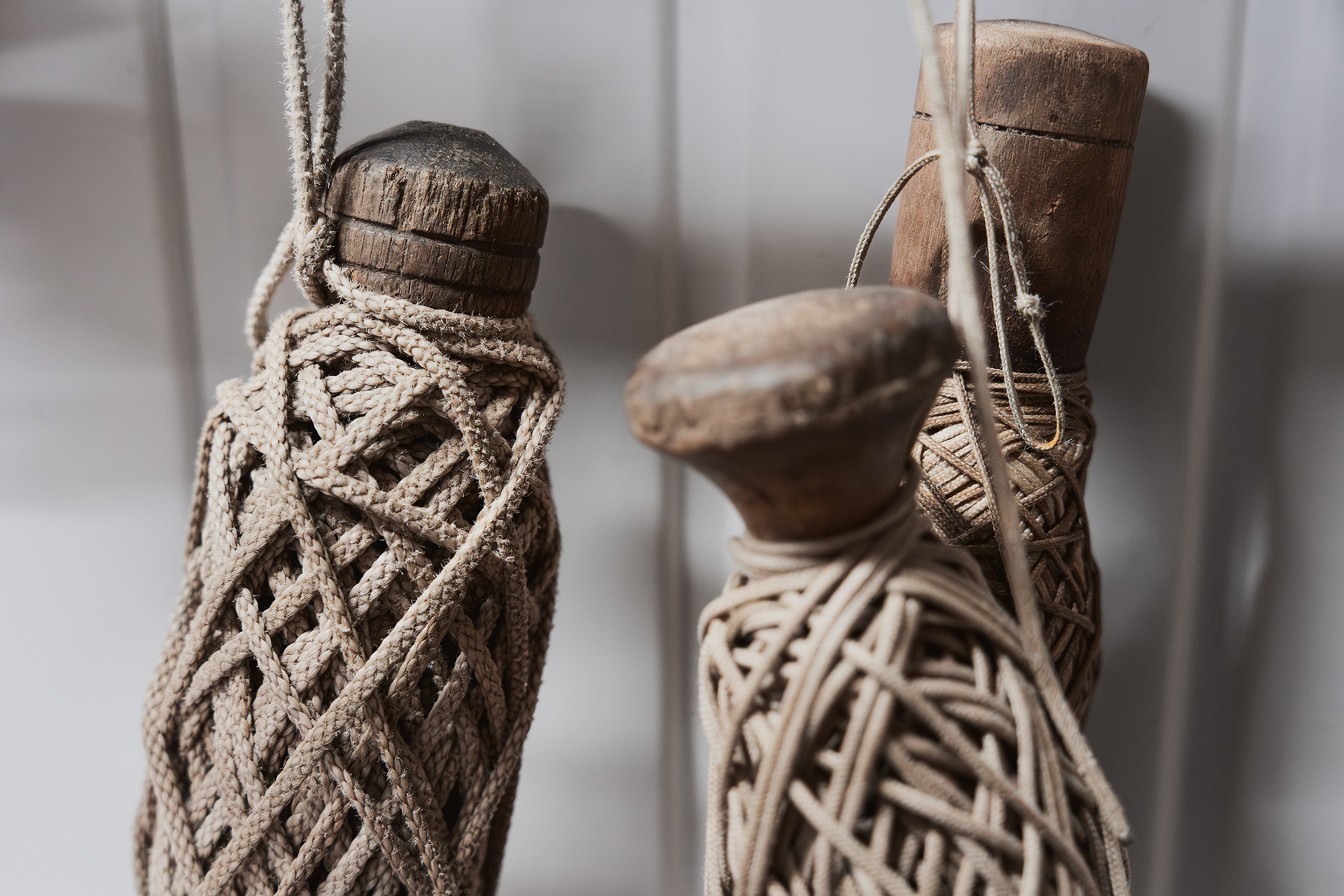
8.
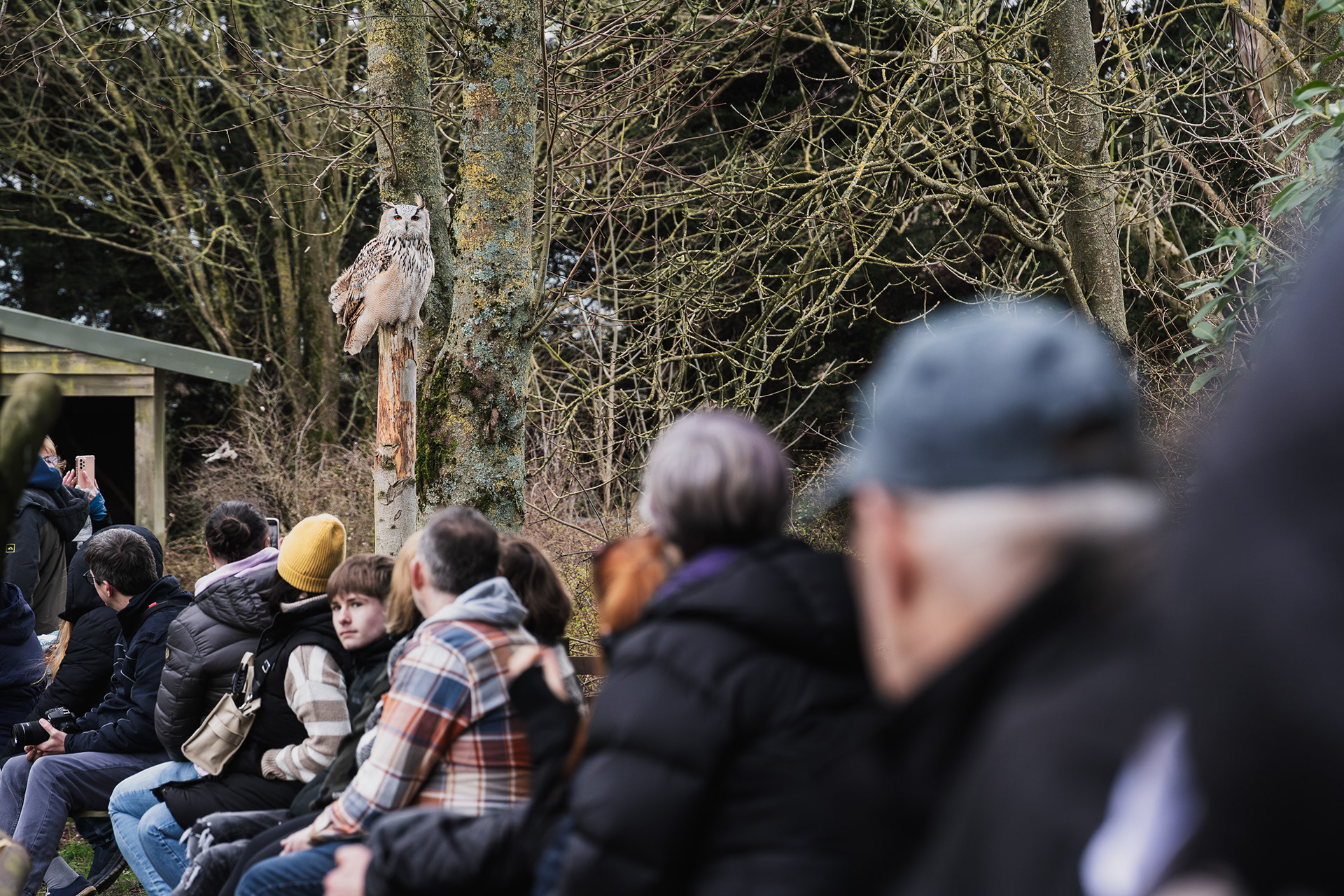
9.
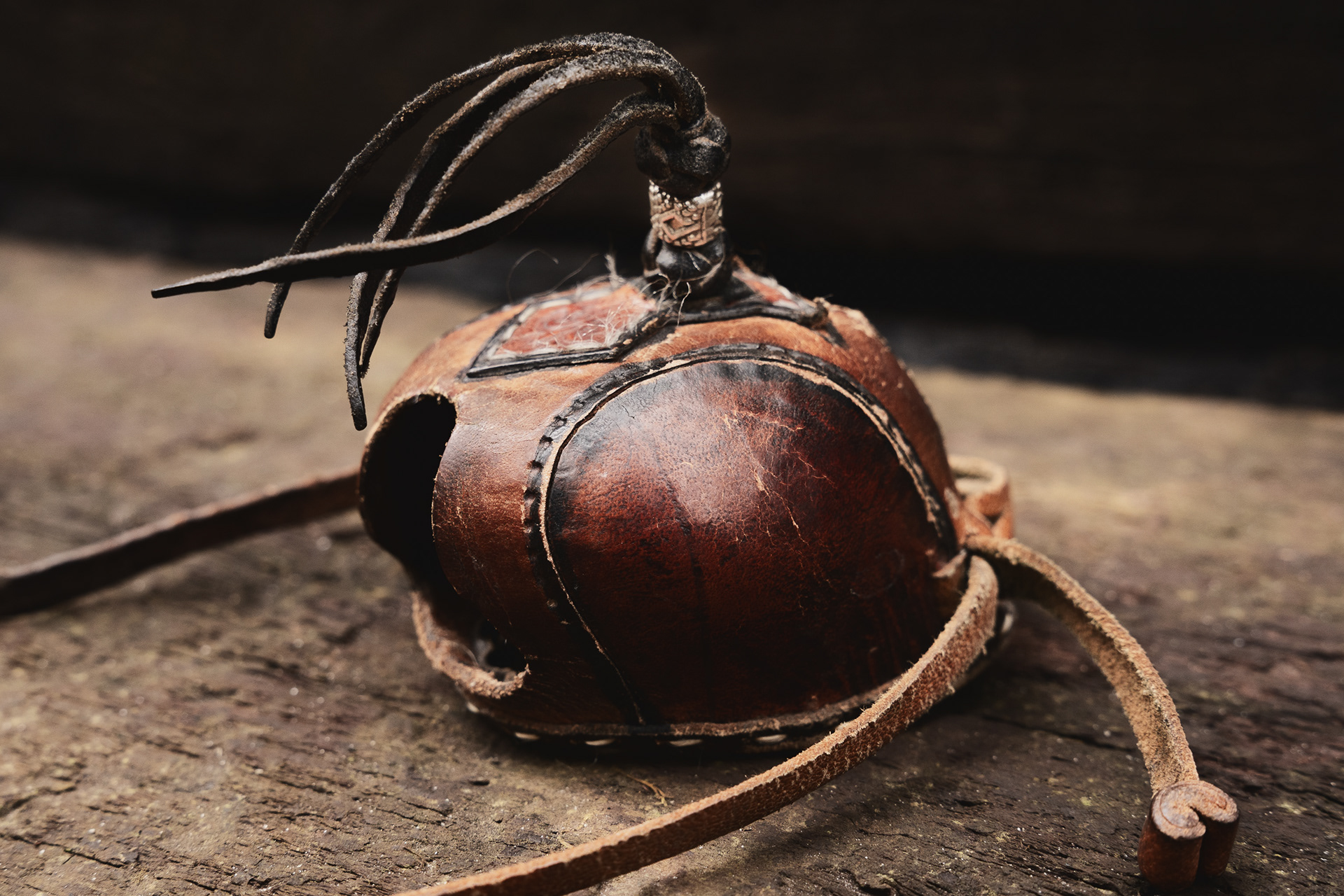
10.
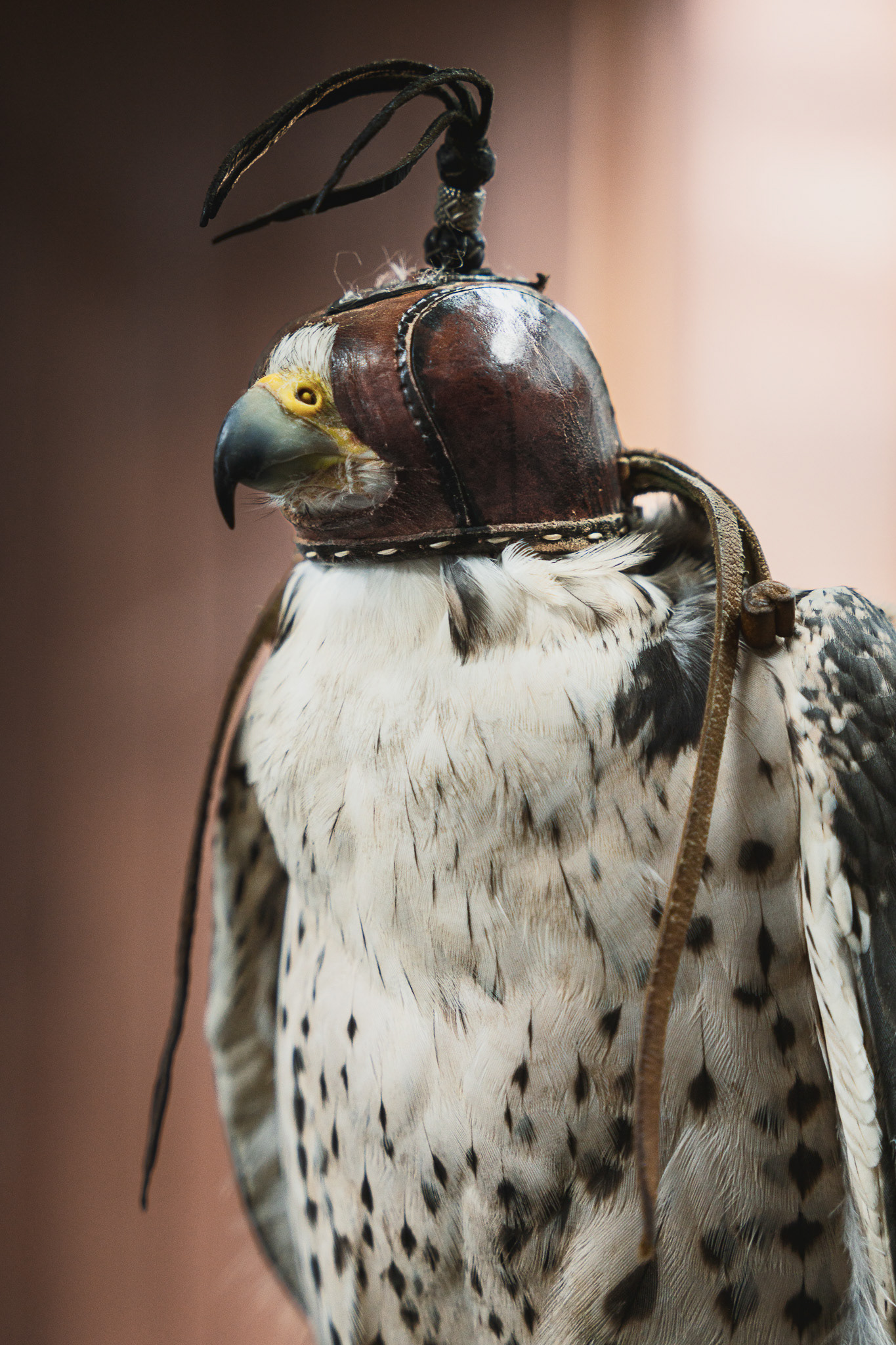
11.
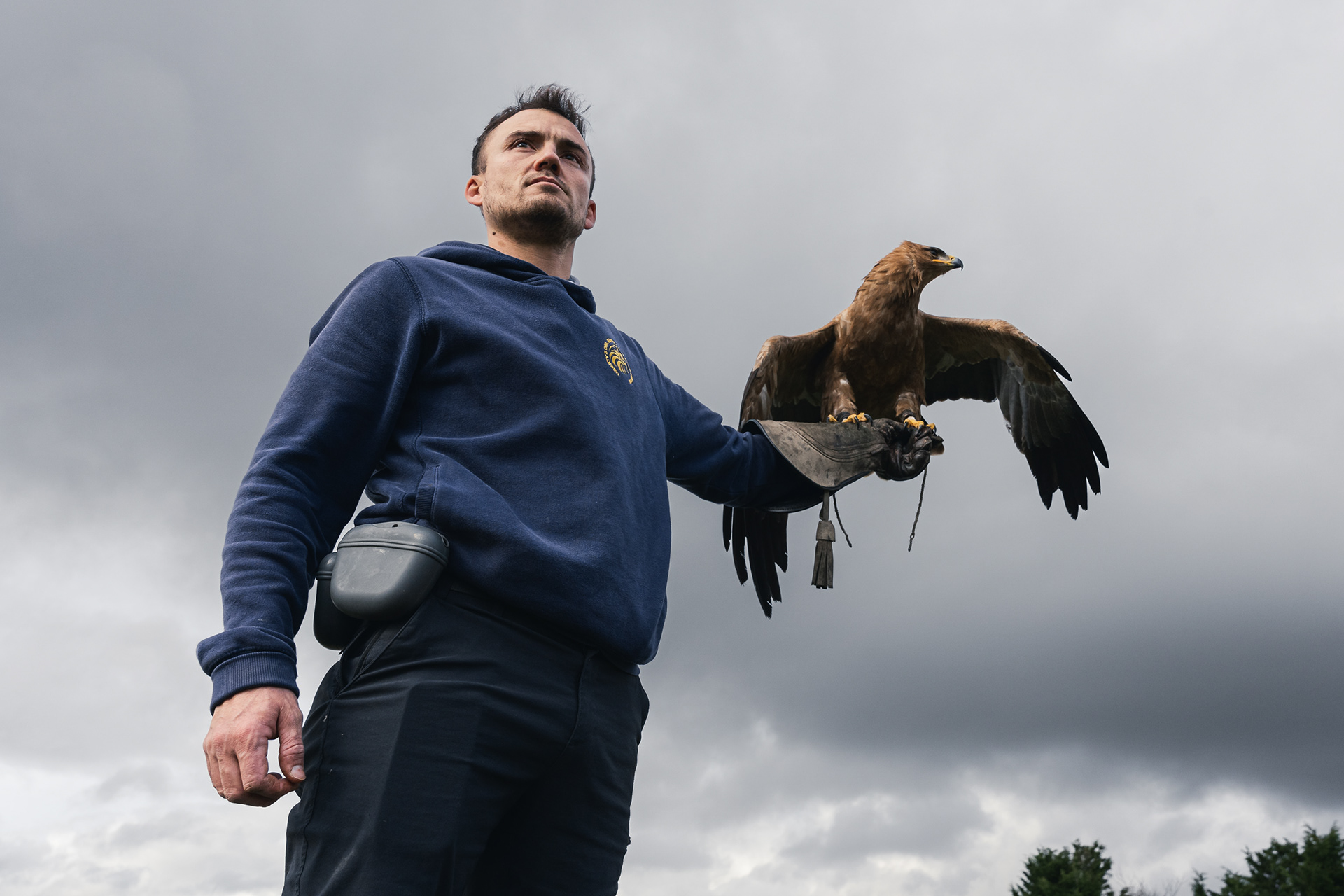
12.
1. Jayson with Cedric, his white-tailed sea eagle. It’s Great Britain's largest bird of prey with a wingspan that can reach up to 8 feet. In 2023, after 200 years, the first wild pair successfully bred in Britain.
2. Lisa and Tutsi, a Great Horned Owl in the weighing room. This is where the falconers can weigh their birds. In falconry, a bird's flying weight is carefully managed to ensure that they fly the best they can. It's determined based on factors like species, age, health, and metabolism. Falconers change the bird's diet and exercise to maintain this weight, to keep them motivated and healthy during activities.
3. Flymo, European Kestrel.
4. The relationship between falconers and their birds is more like family rather than a transaction.
5. Cedric, White-Tailed Eagle.
6. A falconer's glove is worn on the left hand, which was a tradition dating back to the use of falcons while horseback riding. It protects the falconer from the bird's talons and provides a stable perch for the bird to grip when being held
7. A falconer's glove is worn on the left hand, which was a tradition dating back to the use of falcons while horseback riding. It protects the falconer from the bird's talons and provides a stable perch for the bird to grip when being held.
8. These creance lines are essential tools in falconry training. Each line is chosen based on the bird's size and weight, each offers varying levels of strength. They allow for control during training exercises, helping falconers guide birds through commands before they're ready for free flight.
9. Educational flying demonstrations show the vital role of birds of prey in ecosystems worldwide. These teach visitors about conservation initiatives, such as the protection of red-listed vultures, which are important for ecological stability.
10. Falconry hoods play a crucial role in keeping sensitive birds calm, such as falcons, by simulating night time conditions.
11. By wearing the hood, the birds are less likely to injure themselves by accident. Interestingly, the term 'hoodwinked' originates from this practice.
12. Achilles, the Tawny Eagle. These birds are known for their aggressive behaviour, often picking on larger vultures in the wild. They have great eyesight and powerful talons, making them amazing hunters of small mammals and birds.


